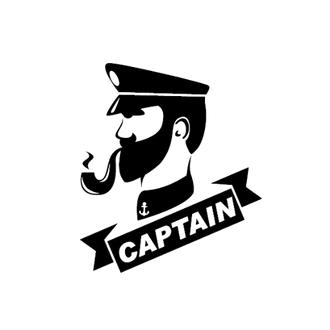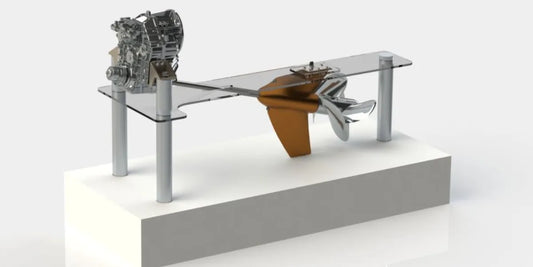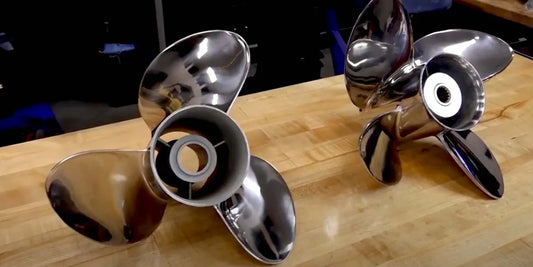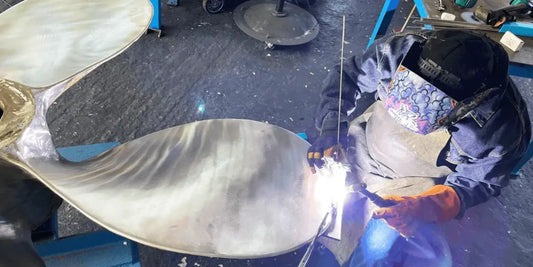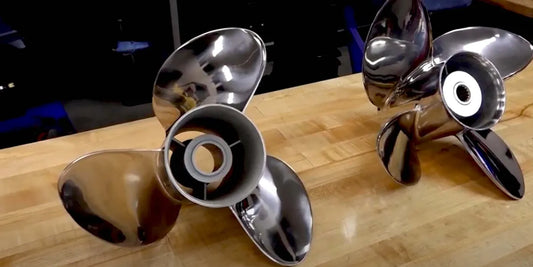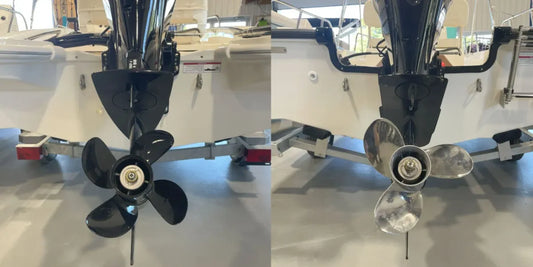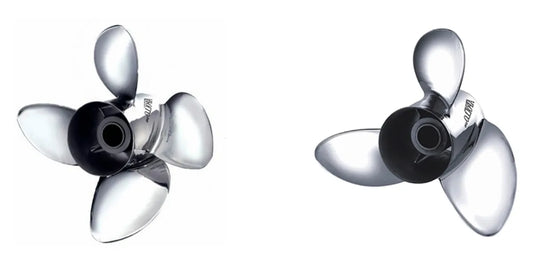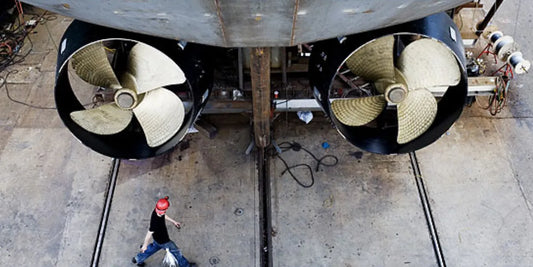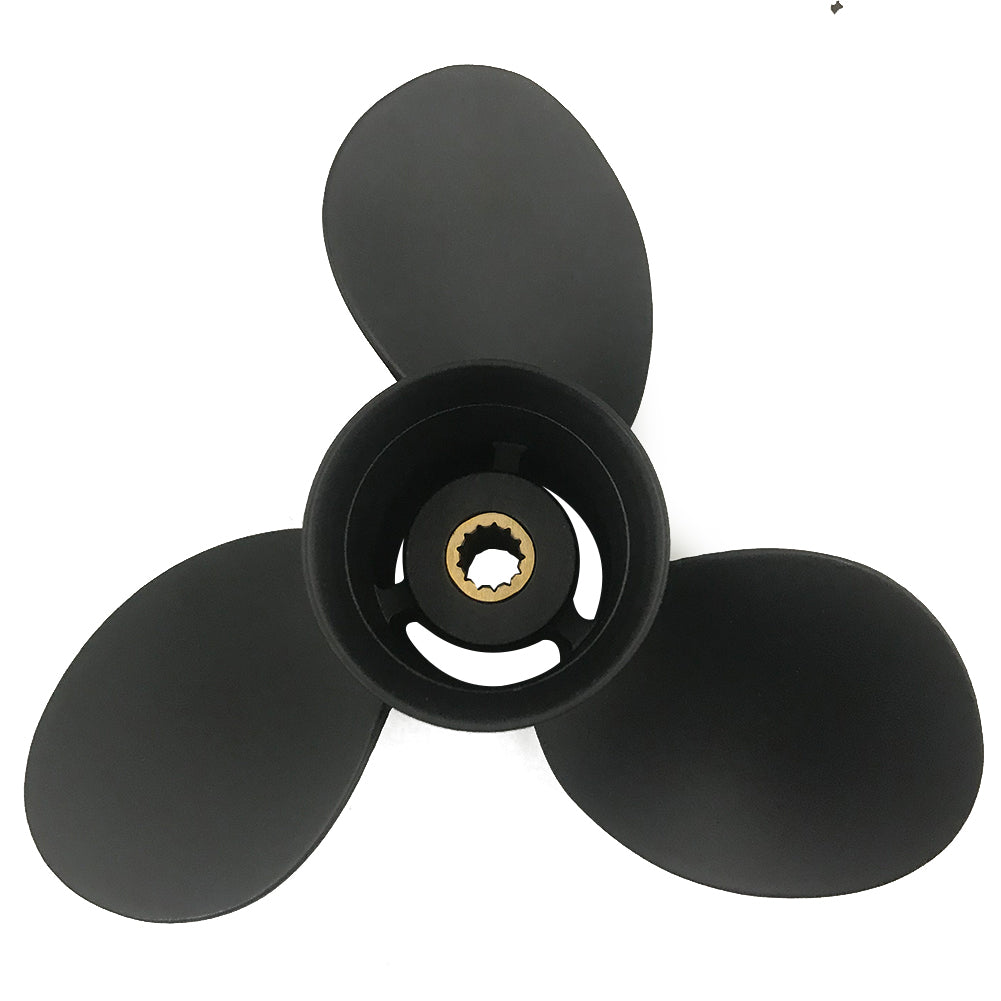Selecting the correct propeller for your vessel can significantly impact performance, fuel consumption, and handling. Whether a 4-blade propeller or a 3-blade propeller has been considered, understanding the key differences and advantages of either option is paramount to the efficiency of the boat and to your specific requirements when in use. This guide will explore the benefits and drawbacks of each configuration, providing you with additional information to aid in your decision. From performance intricacies, fuel economy, and versatility, we will cover everything you will need so that your choice of propeller matches your boating goals.
Understanding Propeller Basics

What Is a Propeller?
A propeller is merely a mechanical device that converts rotational power into thrust, moving any boat or aircraft forward. It consists of blades, usually two or more, mounted around a central hub. The blades rotate whenever the engine drives them, creating a pressure difference in the surrounding water or air. This pressure differential creates thrust that pushes the vessel in the desired direction. These propellers are, of course, the most crucial factor to be considered while designing for the speed of many boats; their size, pitch, and material composition are the factors that affect speed, fuel economy, and ease of handling on varying occasion; the perfect choice of a propeller for variable conditions such as cruising, fishing, or water sports will not only perform optimally but also gladden the boat owner's experience.
How Blade Count Affects Performance
A propeller's blade count significantly affects several aspects of a boat's performance, efficiency, and handling in various water conditions. In general, the higher the number of blades, the smoother its operation and the better its grip on the water, resulting in less water slippage. Three-bladers are considered the most common types, as they provide a balance between speed and fuel efficiency, making them suitable for general recreational boating. Conversely, four-blades offer better acceleration, maintain higher speeds at lower RPMs, and improve handling in choppy waters, thereby making them ideal for water sports or heavy load demands.
An excellent option for power and stability is a set of five blades. Such a propeller would be ideal for utmost control and smooth running over fine timber, for instance, on the luxury end of boat-building, or in testing tidal conditions. However, more blades generate more drag, which is counterproductive to choosing a top-speed prop.
Other factors come into play in terms of perfecting the blade count. Engine capacity, hull design, and utilization would all come into play. For example, most competitive anglers opt for a higher blade count, prioritizing quick acceleration and some degree of stability in rough conditions. In contrast, the speed freaks, with a need for speed, would consider a three-blade prop for nothing but top speed. Ultimately, having a working knowledge of these forces ensures that this propeller choice aligns perfectly with the performance parameters and operational requirements.
Introduction to 3-Blade and 4-Blade Props
For the selection of 3- or 4-blade propellers, special consideration must be given to the individual characteristics that affect performance on water. A 3-blade propeller is often said to provide more top speed due to its lower drag and lighter weight. This configuration is best suited for applications that require greater acceleration and top speeds, such as recreational boating and water sports. 4-blade propellers excel in situations where precise control, smooth handling, and efficient operation at low speeds are essential. The extra blade enhances grip and possibly reduces vibration, which comes in very handy for trolling, navigating rough water, or making tight maneuvers.
Performance data consistently show that 3-blade propellers tend to develop higher speeds, achieving a velocity of 5-10% higher than 4-blade types. However, 4-blade types do offer improved fuel efficiency and greater stability by resisting cavitation, allowing the engine to perform better under load. The choice between the two depends on what you want out of your boat, whether it's speed or stability, taking into account the activities you will be doing in the water and the conditions under which you will be operating.
Comparative Analysis of 3-Blade and 4-Blade Propellers

The Efficiency and Speed: 3-Blade vs 4-Blade
Regarding the topics of efficiency and speed, there is indeed a clear distinction between 3-blade and 4-blade propellers, which is dependent on variables such as craft type, engine power, and operating conditions. 3-blade propellers maximize top speeds. They are preferred in situations requiring high performance, such as lane racing or water sports, because they have less drag and are lighter—accordingly, the 3-blade propeller design channels water with minimal drag when operating at high RPMs.
Conversely, a 4-blade propeller provides consistent thrust, offering utmost handling comfort, especially in rough waters. Having an additional blade means having more surface area to push against, thereby improving acceleration and the friction, the regions in which traction really matters, such as towing, fishing, or battling rough and turbulent conditions. As a result, 4-blade propellers appear to offer better fuel efficiency at mid-range cruising speeds, as they enable the engine to run at lower RPMs while maintaining a reasonably steady performance. Thus, the choice between 3 or 4 blades must consider the intended use, the desired performance criteria, and the environment in which it is to be set up, to maximize speed and economy.
Fuel Consumption: Which One?
The design and operation of the propeller have a significant impact on overall efficiency in terms of fuel consumption. Typically, a 3-blade propeller excels in top speed performance, as it generates minimal drag, making it the preferred choice for speed-conscious operators in flat-water situations. That quick acceleration and high RPM, however, result in increased fuel consumption during cruise speed.
The 4-blade propeller, meanwhile, is an equilibrium between power and efficiency, smooth at mid-range speeds. Keeping engine RPM low means better fuel economy while cruising, especially with heavy loads or under choppy conditions. For instance, recent hydrodynamic performance research reveals that a 4-blade propeller can reduce fuel consumption by as much as 10% under certain operating conditions compared to a 3-blade propeller.
Note that this factor will be the most important to the buyer's needs. Boats that typically travel long cruising distances, tow other boats, or operate in challenging environments may benefit from the steady forces and improved fuel efficiency provided by a fourth-blade prop. On the other hand, lightweight crafts designed for short, fast runs would benefit from the third blade design. Understanding how specific engine characteristics interact with propeller design and intended application enables boat owners to make informed choices that maximize fuel consumption without compromising desired performance.
Handling and Stability: A Detailed Comparison
Handling and stability are both treated distinctly by the design and blade arrangement of a propeller, and, hence, essentially, the whole performance of the vessel on the water. Four blades are the recognized design for higher handling performance and better stability, especially in choppy or rough waters. Slippage is reduced, and more consistent thrust is generated with this design, a feature vital for larger vessels or those loaded heavily regularly. The improved grip of the water helps achieve a smooth turn and provides pinpoint control, thereby providing the much-needed reliability for fishing boats and cruisers in changing conditions.
Alternatively, the 3-blade propellers are designed for speed and agility, with quicker acceleration and a relatively high top speed. Vessels fitted with 3-blade propellers are somewhat responsive, offering an exhilarating experience over heavy-duty performance for the hobbyist. The trade-off usually favors a slight edge in stability in favor of the 4-blade one, especially in adverse conditions.
For instance, studies have shown that a 4-blade design generates less vibration and is more fuel-efficient, primarily due to the steady distribution of power. In contrast, a 3-blade design offers the best performance for lighter vessels intended for recreational or racing purposes. It comes down to a balancing act between operational needs, vessel size, and intended use. When these are matched well, handling and stability can be tailored to meet the demands of the watercraft's purpose perfectly.
Choosing the Right Prop for Your Boat

Factors to Consider When Choosing a Propeller
Choosing the right propeller for a boat is a crucial consideration due to its impact on performance, fuel efficiency, and overall handling. Some of these factors are:
Propeller Material: Propellers may be made of either aluminum or stainless steel. Aluminum propellers are lightweight and cheap, and can satisfy most recreational requirements. Stainless steel types are expensive but offer better durability and performance, and are thus used for high-speed boats or whenever the waters have to be navigated with difficulty.
Blade Number and Shape: The blade number and shape have a significant impact on the overall performance of the boat. A three-blade propeller is generally faster and suitable for all-around use. A four-blade propeller offers more thrust, better handling in rough conditions, and superior fuel economy for water sports or fishing applications.
Pitch: The pitch is the theoretical distance a propeller would move in one rotation. Higher-pitch propellers create more speed but require more engine power, while lower-pitch designs ensure quicker acceleration and are better suited for towing or discreetly loaded boats.
Diameter: Diameter, or the size of the circle created by the propeller blades, affects both power and thrust. Bigger diameters deliver better low-end power, which is appropriate for heavier boats, while smaller diameters are geared toward top speed and agility in lighter craft.
Boat Engine Compatibility: Not all propellers are compatible with every type of engine. There are factors, such as horsepower, RPM range, and gear ratios, that must be in favor of the design to ensure it runs smoothly without overloading the engine.
Intended Use: Consider your typical activities on the water. High-speed runs require performance-optimized propellers, while fishing or towing necessitate propellers designed for low-speed stability and maneuverability.
Environmental Conditions: When selecting a material or design, one should consider factors such as water depth, salinity, and the presence of debris. If working in a shallow, debris-heavy area, stainless steel may well be the best investment because of its resistance to damage.
By weighing these considerations, individual boat owners can select a propeller that best suits their needs to maximize efficiency and enhance their boating experience. This essentially means that an optimized propeller maximizes speed and performance, keeping the engine of the boat and the overall system alive longer than it would otherwise be.
Best Applications for 3-Blade and 4-Blade Props
When you set about choosing a propeller for your boat, you must understand the specific advantages of 3 and 4-blade propellers. Each offers benefits in a particular application, which helps fine-tune performance and efficiency.
3-Blade Propellers: They are designed for use where speed and fuel efficiency are the primary considerations. With a streamlined outline, they create little drag in the water, allowing for higher top speeds to be attained. 3-blade propellers are most commonly used in boats for recreational purposes, such as water skiing, wakeboarding, or general cruising. They are also preferred in open waters, where acceleration and maximum speeds are more instrumental than handling in rougher conditions. It has been established through tests that boats with 3-blade propellers generally exhibit better fuel consumption during cruising at medium to high speeds compared to those fitted with 4-blade propellers.
4-Blade Propellers: While 4-blade propellers are ideal for situations requiring higher control and stability, their power is particularly suited for handling heavy loads, making them a common choice for fishing boats, cruisers, or boats operating in rough or shallow waters. These propellers offer improved low-speed handling, which is beneficial when precise maneuvers are required, such as docking or navigating through tight areas. They are also favored for their ability to maintain speed more effectively through choppy and rugged terrain, resulting in a smooth and comfortable ride. Data indicate that 4-blade propellers may offer slight improvements in fuel economy during low-speed operations compared to 3-blade propellers.
Key Takeaways: A propeller with three or four blades should always be selected based on the vessel's primary function and operating environment. If speed and efficiency in open waters are the key, then 3-blade props are preferable; on the other hand, 4-blade props work better when stability, handling, and slow-speed operation are concerned. By making your propeller fitting correspond to your boat's eventual use, you will optimize performance, reduce fuel consumption, and simply make your boating days more enjoyable.
Expert Recommendations Based On Boat Type
Fishing Boats: For fishing boats where the precision of control and stability are paramount, a 4-blade propeller is generally considered more beneficial. At low speeds, these props keep a smooth handling, which is much more important when maneuvering through cramped fishing spots or while trolling. Additionally, the greater thrust at low RPMs helps maintain steadier movements, even in choppy waters. Recent industry statistics indicate that low-speed fuel consumption could be improved by as much as 10% with 4-blade propellers, making them particularly well-suited for anglers who spend most of their cruising time at slower speeds.
However, if considered solely for speed and the ability to plane quickly, a 3-blade propeller will generally perform better than a 4-blade propeller, whose structure is better suited for slower fishing boats.
Speedboats: This is usually the fastest type, with rapid acceleration, that benefits from 3-blade propellers. The fewer the blades, the less the drag, thus allowing higher speeds needed for water skiing or race activities. With new advances in engineering, such modern 3-blade props have become hydrodynamically efficient, resulting in rapid transitions from hole shots to planing. Comparative performance analyses have shown that a well-fitted 3-blade prop can make a gain of about 5 to 7% in top-end speed over a 4-blade prop on high-performance vessels.
All about the pontoon boat: Pontoon boats are never a dull affair and can be used for so much recreational and social time in pleasant environments. Larger bases are necessary to ensure stability on the pontoon while providing just the right amount of speed. Depending on the engine output, as well as the application being postseason, owners may opt for either a 3- or a 4-blade propeller. When the pontoons are intended for light cruising or carrying heavier loads, a 4-blade prop is generally preferred, as it offers better grip and control. Data trends suggest that cavitation is reduced on pontoons having 4-blade props, slow-speed maneuverability increases, and the entire ride becomes more pleasant and dependable.
The Offshore Vessels: The nature of work involving offshore vessels requires utmost trustworthiness, robustness, and efficiency to come into play when operating offshore in the open and often unpredictable seas. Almost all offshore enthusiasts choose four-blade propellers for their greater bite in heavy weather. Another blade engages more water, thus providing stability and smoothness whilst working in furious conditions. It has been proven that vessels working offshore with 4-blade props can cruise at steady speeds with less engine effort, which is a great advantage on long journeys.
Choosing the correct propeller for your boat and its specific application leads to maximum performance and fuel efficiency, ultimately enhancing your boating experience. Having regular maintenance and seeking professional advice when upgrading parts will ensure your vessel operates at peak efficiency in all weather conditions.
Performance Testing of 3-Blade vs 4-Blade Props

Real-World Testing: What the Data Shows
The extensive testing of 3-blade propellers versus 4-blade propellers reveals distinct performance characteristics in terms of speed, load, and water conditions. The data show that 3-blade propellers perform best in top-speed situations, offering quicker acceleration and higher maximum speeds due to their lower drag. On the contrary, 4-blade propellers offer excellent stability and fuel efficiency, particularly when cruising at medium speeds or hauling heavier loads.
For example, different hull designs were incorporated into the experimental model, and 4-blade propellers confirmed one thing in actual handling: smoother handling in rough waters, which helps avoid cavitation while maintaining thrust. This factor makes them vital for comfort and control for the average recreational boater. Speed or quick response makes 3-blade props ideal for that hole shot, allowing for faster and better performance, making them a good choice for speed lovers or speed boats that require quick turns for hitting or fishing.
Another data source indicates that fuel consumption is more efficient with 4-blade settings at uniform speeds, as the higher blade surface area tends to reduce stress on the engine. Bearing these facts in mind would enable the boater to select a better propeller based on factors relevant to their performance needs, providing a suitable compromise between speed, control, and efficiency.
Experiences Shared by Boat Owners
Boat owners have shared some valuable insights about their propeller choices, highlighting the interplay between real-life usage and performance expectations. For instance, several sailors report that switching to a 4-blade propeller significantly improved their ability to control low-speed maneuvering in choppy waters. This better control is usually associated with more blade contact area with the water and hence smoother handling and more responsive maneuvering.
Additional popular experiences indicate enhanced stability and reduced vibration while running 4-blade propellers, especially for families or groups partaking in leisure boating activities. Owners of smaller, faster craft who have been persisting with cruising speeds have also commended the efficiency gains, saying that all the while, the engine feels less strained, and with the passage of time, fuel consumption decreases. Altogether, this firsthand account aligns well with specialized insight into propeller dynamics to underscore the importance of customizing choices based on the boat type, water conditions, and usage patterns of all concerned individuals.
Performance Test Key Takeaways
Performance tests provided singular evidence of unequivocal benefits in propeller optimizations. Ships cast in the mold of modern propeller designs had smoother handling in varied water conditions, faster acceleration, and less cavitation. These applications proved most effective for mid-sized and smaller boats, where adjustments could directly impact handling and fuel optimization. Data from controlled trials have consistently backed claims, logging speed increases of up to 15% at cruising RPM with measurable reductions in mechanical wear and tear, which tips the longevity scale in favor of these installations. The gist here is that such findings emphasize the selectivity of propellers as the point of concern, considering the diversities of vessel types, to attest to top performance in varying circumstances.
Maintenance and Upkeep of Blade Props

Routine Maintenance for Maximum Efficiency
To ensure maximum efficiency for blade propellers, I maintain a consistent routine that guarantees optimal performance and longevity. I first carry out regular inspections for any damage, including cracks, dents, and bent edges. Such imperfections affect efficiency and also give rise to some mechanical issues in the long run. I also watch out for fouling caused by marine growth, as it can accumulate with barnacles, algae, or debris and seriously affect hydraulics. Cleaning the propellers with a soft-bristle brush or marine cleaner helps to prevent build-up and keeps the blades smooth and more efficient.
An upward point is also made to check for the propeller's balance and alignment. If left unbalanced, a prop would induce vibrations that not only reduce speed and fuel consumption but also prematurely wear away other mechanical assemblies. When I find instances of misalignment, I seek professional assistance to realign or repair the propeller as required. I also lubricate the propeller shaft and its associated linkages periodically to ensure smooth movement under load and prevent corrosion. This becomes all the more important for boats that ply the saltwater since seawater tends to be corrosive.
I keep a regular schedule for servicing and inspection. The pitch and diameter of the propeller are verified against vessel specifications to the extent possible, and worn components are replaced immediately if found. Proactive maintenance improves performance while providing a significantly longer service life for the propellers, thereby delivering the vessel with the highest possible efficiency in any condition.
Common Issues with 3-Blade and 4-Blade Propellers
I have identified several common issues with 3- and 4-blade propellers that require attention to maintain optimal performance. Some of the significant concerns with 3-blade propellers include striking a balance between speed and power. These systems are renowned for their efficiency, resulting in higher speeds; however, certain situations can cause stability issues when a heavier load is applied or in choppy water conditions. Additionally, I have observed that if the 3-blade propeller is set to an improper pitch, cavitation may occur, reducing thrust and damaging the blades over time.
And yet, 4-blade propellers, which offer increased thrust and better handling, do come with their own problems. One such common problem, in my experience, is that they tend to have a slight decrease in maximum speed compared to 3-blade designs and are thus not suited for high-speed applications. With an increased blade area, 4-blade propellers may also be somewhat more vulnerable to fouling or damage from debris, which requires more frequent maintenance to keep them operating smoothly. Both designs can give rise to vibration, noise, and inefficient fuel use when neglected in maintenance or calibration; such issues significantly impair the vessel's performance.
To address this, I regularly inspect the propellers, checking for wear, disalignment, or damage, treating both 3-blade and 4-blade types equally. It is of utmost importance to maintain the correct pitch and diameter settings, regularly clean off any debris, and repair dents or nicks at the earliest opportunity, since these are all elements at the core of performance issues. Paying attention to all these details will allow me to leverage the benefits of each type of propeller while avoiding any operational inefficiencies that may hinder the craft's efficient functioning and negatively impact its monetary performance.
When should I replace my propeller?
Knowing when to replace your prop is crucial to keep it in good working condition and protect the engine from damage. From my experience, the propeller may be due for replacement whenever there is a marked drop in speed, fuel consumption, and general performance, even after all other maintenance measures have been carried out. Another way to determine if your propeller needs to be replaced is to look for excessive wear, such as warped blades, razor-sharp cracks, or persistent vibrations while in use. Minor dents or corrosion slowly build up and may come to affect the prop's efficiency, so time is of the essence for a full replacement.
I also watch for the changes to my boating needs or conditions. Suppose I switch to activities where higher speeds but lower torque are required, such as waterskiing or cruising with heavy loads. I have to reconsider whether my current propeller really meets such demands. After all, newer alternatives, featuring innovative designs and materials, are likely to offer improved performance. Thus, the next change of the propeller would be an excellent opportunity to consider upgrading, given the consequent efficiency improvements and long-term cost savings. Regular checks on the state and suitability of the current propeller allow me to enjoy a carefree yet smooth running of the engine, while also protecting it from undue stress.
Reference Sources
-
2025 Insights: 3 vs 4 Blade Propeller Guide for Maximum Efficiency - Captain Propeller: Discusses efficiency differences, drag, and rotational resistance between 3-blade and 4-blade propellers.
-
3 or 4 Blade Prop is Better for Planing Faster? - Reddit: Community insights on performance, traction, and speed differences.
-
Three-Blade Versus Four-Blade Propellers - BoatTest: Explores horsepower generation, drag, and rpm performance for both prop types.
-
3 Blade Propeller vs 4 Blade Propeller - Boat Design: Highlights efficiency trade-offs and design considerations for each propeller type.
Frequently Asked Questions (FAQs)
What advantages does a 4-blade prop provide over the 3-blade prop?
Among the advantages a 4-blade prop has over a 3-blade prop, first comes handling at low speed. This makes it excellent for a recreational boat that needs precise maneuvering. It also increases the result, so to speak, allowing rapid acceleration from a standstill. Fourth-blade propulsion provides better control at low speeds, pulling harder. However, while it grants excellent unhindered low-speed running, its high-speed cruising efficiency may suffer at least a few points compared with the 3-blade type. Setting the low- and high-speed trade-off is something that boat owners need to keep in mind as they decide which prop is best for them.
How does the number of blades affect the top-end speed?
The number of blades on a propeller could matter for top-end speed. A 3-blade prop will generally allow higher speeds because it has less drag and is more streamlined, so that it can be beneficial at WOT rpm. A 4-blade prop, meanwhile, would provide better low-speed performance and acceleration, but would also cause more drag, limiting top-end speed slightly. However, this varies with the pitch and diameter of the props: some will argue that the slight loss of speed is worth the gains in handling and control at low speeds.
How does a 4-blade prop fare in fuel mileage compared to a 3-blade prop?
Fuel mileage can change with the choice between a 4-blade prop and a 3-blade prop. At higher speeds, a 3-blade prop generally assists in fuel economy the most, as drag is reduced. Another way to put it is a 4-blade prop should pull better in the low speed region, yielding cost efficiency in slow cruising or trolling. If your style involves frequent shifting between low and high speeds, this prop may well increase fuel efficiency overall, especially if you value acceleration and handling.
What are the best props for recreational boats?
The best propeller for recreation boats depends mainly on the specific needs and usage patterns of the boat owner. For topside speed and efficiency, the 3-blade prop is just fine. However, if low-speed handling and hole shots are prioritized, a 4-blade prop is the ideal choice. Hull type, engine power, and standard load on the boat are other significant factors in choosing the best prop. It is essential to consider the activities you engage in, such as skiing, fishing, or simply cruising, when selecting the right propeller.
Does a 4-blade improve the hole shot or not?
Indeed, a 4-blade propeller is beneficial for improving hole shot acceleration. More blades provide a larger surface area and increased thrust, propelling the boat forward from a standstill in a matter of seconds. Activities that necessitate quick take-offs, such as towing skiers and wakeboarders, greatly benefit from this. The thrust generated by the 4-blade propeller also allows for maintaining a steady speed during the initial acceleration phase, a significant advantage when navigating choppy waters. The trade-off that must be considered is the possibility of a slight loss in top-end speed.
How do you make the choice between the 3-blade and 4-blade propeller for your boat?
Several factors influence the decision between a three- and four-blade propeller, including your general boating pursuits, desired speed, and handling preferences. A three-blade prop is far better for high speeds; your priority is efficiency. A four-blade prop will work better for low-speed handling and getting to the plane quickly, making it more suitable for trolling or water skiing. Other factors, such as the engine's power, hull shape, and water type, should also play a significant role in making a decision. Trying both is of great help in determining which prop is best for the person.
